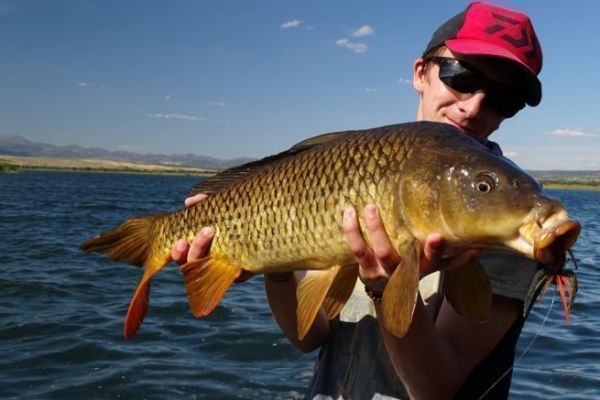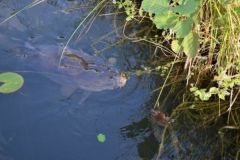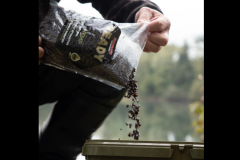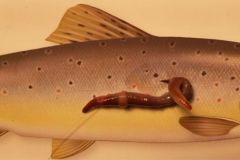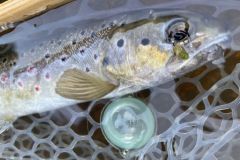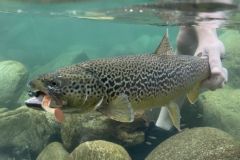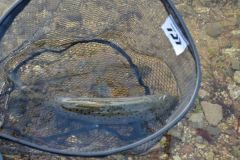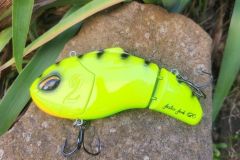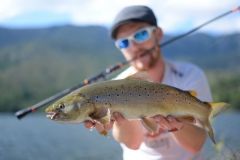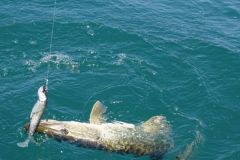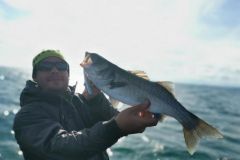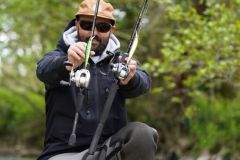Choosing the right lure
We know that carp are not carnivorous fish, so we're going to have to adapt our lures to imitate a carp's usual food. Forget your shads and commas, here we're not talking about fish imitation, but rather insect imitation.
The insects and invertebrates that carp encounter in their environment change with the seasons. In summer, it's not uncommon for grasshoppers and beetles to be found in the water, serving as meals for opportunistic fish. In spring, the hatching of crayfish eggs is an easy and abundant source of food for carp. Each season has its own specificities and it's up to you to adapt your lure to correlate with what carp eat.
Lure size depends on the environment. Generally speaking, 2 to 5 cm lures are ideal for prowling for fish weighing 1 to 5 kg. Larger crayfish mounted on rubber jigs can be used for fish weighing over 10 kg.
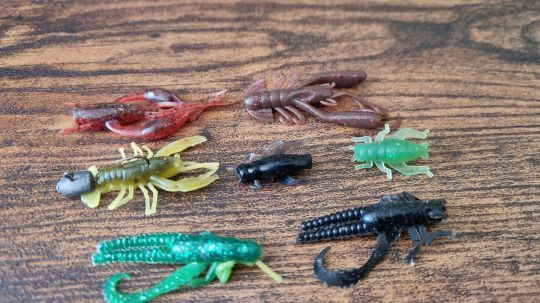
Lead head weight
Each type of insect or invertebrate appears differently in a carp's environment. Grasshoppers, for example, originate from the earth, so tend to float and then sink slowly once drowned. A small crayfish, on the other hand, never comes to the surface, but rather moves along the bottom. The weight of our sinker must be adapted to the insect we wish to imitate.
A light lead head will make our lure hover on the way down and make it more visible to carp. A heavy lead head will recreate the behaviour and movements of a small crayfish trying to escape from such a large predator. We generally consider weights between 0.2 and 3 grams for small lures.
If you decide to target very large fish with rubber jigs and crayfish, the weight should be sufficient for your lure to reach the bottom quickly without being hindered by branches or seaweed, i.e. around 14 to 21 g.
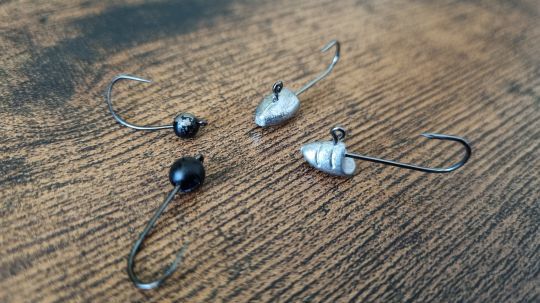
Rod and reel set
Choosing your rod if you want to fish with rubber jigs is very simple, just take your 7-28 g black-bass set which will do the job perfectly.
On the other hand, if you want to tackle UL fishing with fantastic sensations, your equipment will need to be a little more specific. A rod capable of casting very light weights is required. A power range of 0.5 to 5 g is ideal, but the blank's power reserve leaves something to be desired on fish weighing over 5 kg. I recommend a 2-8 g with a good reserve to be able to handle fights more easily without losing too much casting distance.
As for the reel, a large braid reserve will be useful on big fish, ideally in 8 to 11 hundredths, followed by a fluorocarbon leader in 20 hundredths. The reel size should be between 1,000 and 2,500, depending on the average size of the fish in your fishing area.
